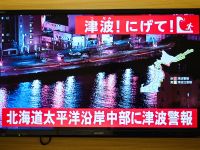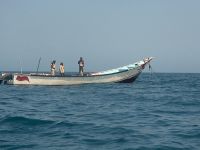With proven oil reserves expected to last only about 10 more years and a population growing at 2.5 percent per year, Syria may become a net importer of oil within the next decade. Thus, the exploration for oil and natural gas is a top priority in Syria. Note: The information contained in this report is the best available as of February 2001 and can change.
Recent developments: On June 10, 2000, President Hafiz al-Asad died, and was replaced by his son, Bashar al-Asad, who promised to undertake a variety of economic, administrative, and political reforms.
Since then, Bashar al-Asad has issued several decrees and laws aimed at establishing a Damascus Stock Exchange, legalizing private banks, attracting foreign investment, and harmonizing Syria's various (official, neighboring country, and promotions) currency exchange rates.
The ultimate goal of such reforms is to move Syria towards a more market-based, modernized economic system. In recent years, Syria has moved extremely slowly and cautiously in this direction.
For the most part, however, as of early 2001, large state corporations continue to control all strategic sectors, including oil, electricity, banking, and chemicals. In December 1997, Syria decided to begin negotiations with the European Union (EU) regarding a possible association agreement.
This agreement could take many years to conclude, and will require significant changes in the Syrian economy. In January 2000, an EU delegation urged Syria to carry out real economic reforms and offered Syria the possibility of an association agreement with the EU.
Currently, the EU is Syria's main trading partner, buying more than half of Syria's exports. In December 2000, the EU and Syria held their fifth round of negotiations on an Association Agreement.
Issues include providing EU companies preferential access to the Syrian market, and to facilitate EU investment in Syria.
Following two years of recession caused by low oil prices and a severe drought, Syria's economy resumed growth in 2000, while inflation remained subdued. For 2000, Syria's real gross domestic product (GDP) grew by 1.5 percent, with consumer price inflation at 0.5 percent.
Sharply higher oil prices (and, consequently, an oil export revenue windfall) and a recovering agricultural sector were the main factors in this turnaround. Real GDP growth is expected to reach 4.2 percent in 2001.
With its rapidly rising population (around 2.5 percent per year), however, it is estimated that Syria needs real GDP growth of close to 5 percent annually in order to make significant economic progress.
Syria's largely state-owned economy continues to be hurt by low investment levels, fiscal imbalances and distortions (such as subsidies), an overvalued currency at the fixed exchange rate (for "essential" transactions), high levels of foreign debt, a hard currency shortage, falling exports, and other problems, including rapid population growth rates.
According to the Syrian government, the country's unemployment rate is under 10 percent, although according to foreign diplomats, the rate is more likely over 20 percent.
In August 2000, the Syrian government announced that it would increase salaries for employees in the country's large public sector by 25 percent.
In 1991, Syria passed Investment Law No. 10, encouraging foreign and Syrian private investment through a combination of tax and custom exemptions, the right to repatriate profits and relaxation of foreign exchange controls.
Private investors, with financial backing from the Gulf states, have been expanding into various sectors of industry.
This has encouraged the development of textiles, pharmaceuticals, food-processing and other light industries, many built by wealthy Syrians from abroad. Tourism appears to be growing as well.
Still, along with agriculture, foreign aid and remittances from Syrian workers abroad, Syria relies heavily on the oil sector -- for around 65 percent of export revenues, for instance.
Syria's relations with Iraq have improved significantly over the past few years. In June 1997, Syria reopened its border with Iraq for businessmen, and since then a series of trade delegations has traveled between the two countries.
On July 14, 1998, Syria and Iraq signed a memorandum of understanding on reopening an important oil pipeline -- closed in 1982 -- from northern Iraqi oil fields to Syria's Mediterranean port of Banias (see below for more details).
On February 27, 2000, Iraq opened an interests section in Syria -- the first direct bilateral diplomatic link in over 19 years.
On January 31, 2001, Syrian Prime Minister Mustafa Miro and Iraqi Vice President Taha Yassin Ramadan (the highest Iraqi official to visit Damascus in 20 years) signed a free trade agreement.
Currently, trade between the two countries is estimated at around $500 million. Also, Syria and Iraq announced that they had worked out a plan for sharing waters from the Tigris and Euphrates rivers. The two countries urged Turkey to join them in a tripartite agreement.
Oil: Syria's oil industry faces many challenges in the years to come. Oil output and production continues to decline due to technological problems and depletion of oil reserves.
Since peaking at 604,000 barrels per day (bbl/d) in 1996, Syria's oil output has fallen steadily, to an estimated average for 2000 of 530,000 bbl/d, as older fields, especially the 140,000-bbl/d Jebisseh field discovered in 1968, have reached maturity.
Production is expected to continue its decline over the next several years, while consumption rises, leading to a reduction in Syrian net oil exports. Syria hopes to reverse this trend through intensified oil and gas exploration and production efforts.
Oil is critical to Syria's economy, accounting for 55 percent -60 percent of Syria's total export earnings and more than one-third of its GDP.
Syria currently exports Syrian Light, a blend of light and sweet crudes produced primarily from the Deir ez-Zour and Ash Sham fields, and heavy Suwaidiyah crude produced from the Suwaidiyah and Jebisseh fields.
The country also exports fuel oil and other products. Syria is a member of OAPEC (the Organization of Arab Petroleum Exporting Countries), although not of OPEC.
Syria's main oil producer (by far) is al-Furat Petroleum Co. (AFPC) a joint venture established in May 1985 between state-owned Syrian Petroleum Company (SPC -- 50 percent share), Pecten Syria Petroleum (15.625 percent), plus foreign partners Royal Dutch/Shell (15.625 percent) and Germany's Deminex (18.75 percent).
AFPC's fields are located in the northeastern Syria -- particularly the Deir ez-Zour region, where commercial quantities of oil were discovered in the late 1980s -- and are producing about 400,000 bbl/d of high quality light crude.
AFPC's main oil field is al-Thayyem, although production there has been declining since 1991. Another important field -- Omar/Omar North -- began production in February 1989 at 55,000 bbl/d. Shortly thereafter, operator Shell was pressed by the cash-strapped Syrian government to step up production (against Shell's advice) to 100,000 bbl/d.
The result was serious reservoir damage, and in April 1989, output plummeted to 30,000 bbl/d. Currently, Omar produces about 15,000 bbl/d from natural pressure and 30,000 bbl/d from water injection.
Other al-Furat fields include al-Izba (light oil), Maleh (34o API gravity oil), Sijan, and Tanak. Production from fields run by SPC peaked in the late 1970s at more than 165,000 bbl/d.
SPC's fields include: 1) Karatchuk -- Syria's first discovery, located near the border with Iraq and Turkey; 2) Suwaidiyah -- a giant heavy oil field located south of Karatchuk in the Hassakeh region (and extending into northwestern Iraq) which currently produces around 85,000-90,000 bbl/d, and for which TotalFinaElf and Shell have bids for a service contract to enhance oil recovery and increase production to 150,000 bbl/d; 3) Jibsah -- a major field producing both oil and gas; 4) Rumailan -- a small field near Suwaidiyah which produces heavy oil; and 5) Alian, Tishreen, and Gbebeh -- three small, depleting fields producing heavy oil.
Other major Syrian oil fields include Maleh, Qahar, Sijan, Azraq, and Tanak. Jafra, discovered in late 1991 and located near Deir ez-Zour, is operated by TotalFinaElf and has current production of around 60,000 bbl/d.
Besides conventional oil reserves, Syria also has major shale oil deposits in several locations, mainly the Yarmouk Valley stretching into Jordan.
Oil exploration activity in Syria has been slow in recent years due to unattractive contract terms by SPC, and poor exploration results.
For these reasons, only a few companies (i.e., TotalFinaElf, Shell, Deminex) out of more than a dozen operating in the country in 1991 remain in Syria at present.
Under pressure from Shell and TotalFinaElf, Syria has begun to take a more flexible approach to foreign oil contracts, demonstrated by the publication of a favorable consortium agreement which is likely to attract other foreign companies.
In May 2000, a small Canadian company called Tanganyika Oil (an affiliate of Sweden's Lundin Oil) signed an agreement to develop the Oude oil bloc in northeastern Syria near the Turkish border.
Currently, the area has only one producing field at just 2,000 bbl/d. The deal is significant, however, because it marks the first time that foreign investment has been sought for a field operated by SPC.
This opens up the possibility of future such deals, including the Suwaidiyah field, for which Conoco, TotalFinaElf, and Shell have bid.
Since June 1996, when Mohammed Maher Jamal, a geologist, became Oil and Mineral Wealth Minister, oil exploration in Syria has picked up somewhat, although drilling activities are limited to a small number of companies.
In November 1997, a new 12,000-bbl/d oil well ("al-Kashmeh") began production near the Syrian-Iraqi border. The well represented a joint venture between SPC and the Irish company, Tullow.
However, in October 1998, Tullow Oil withdrew its concessions and closed operations in Syria, citing reduced revenues due to low oil prices.
Despite a recent increase in exploration activity, only about two-fifths of Syria's estimated 800 potential oil and gas structures have been drilled. No major new oil reserves have been discovered since around 1992.
Without significant new discoveries, Syrian and foreign oil company officials (including Shell, the main foreign operator) believe that the country could become a net oil importer in the next 10 years or so. The last time Syria was a net oil importer was in 1987.
Source: United States Energy Information Administration
© 2001 Mena Report (www.menareport.com)







